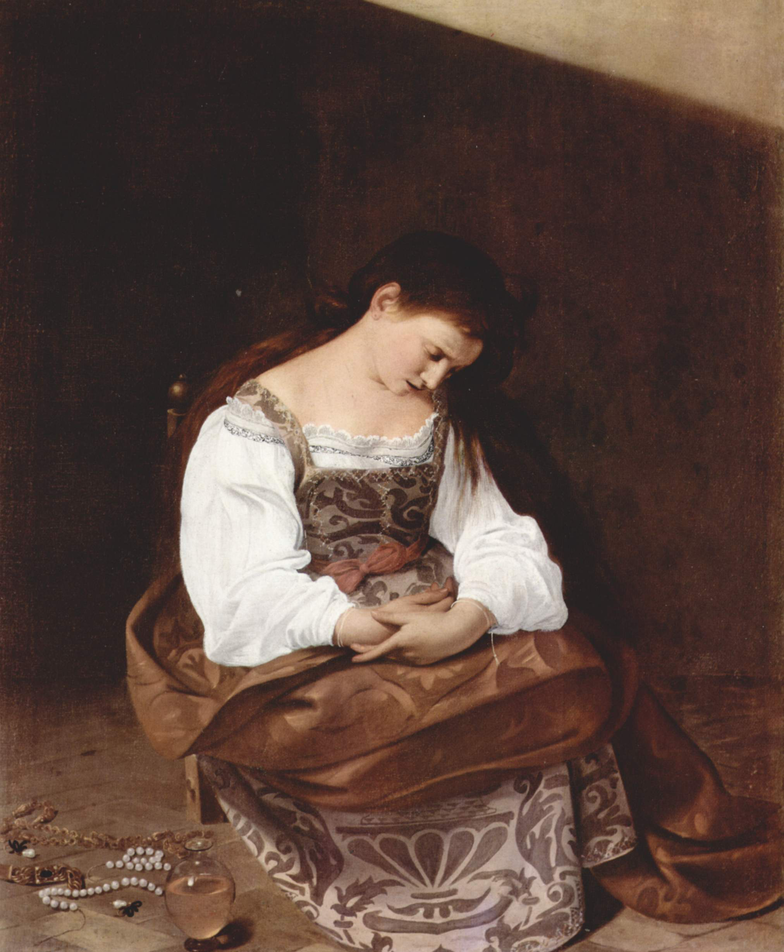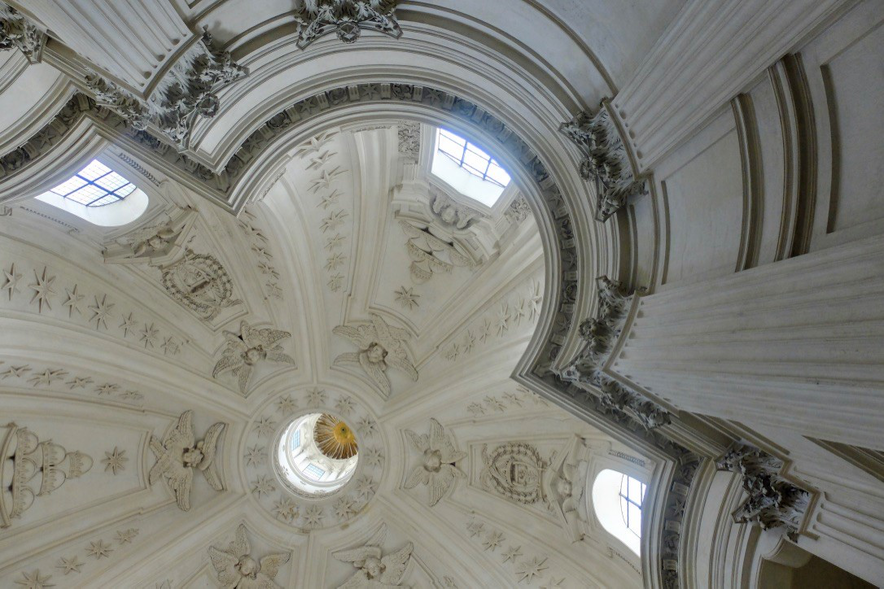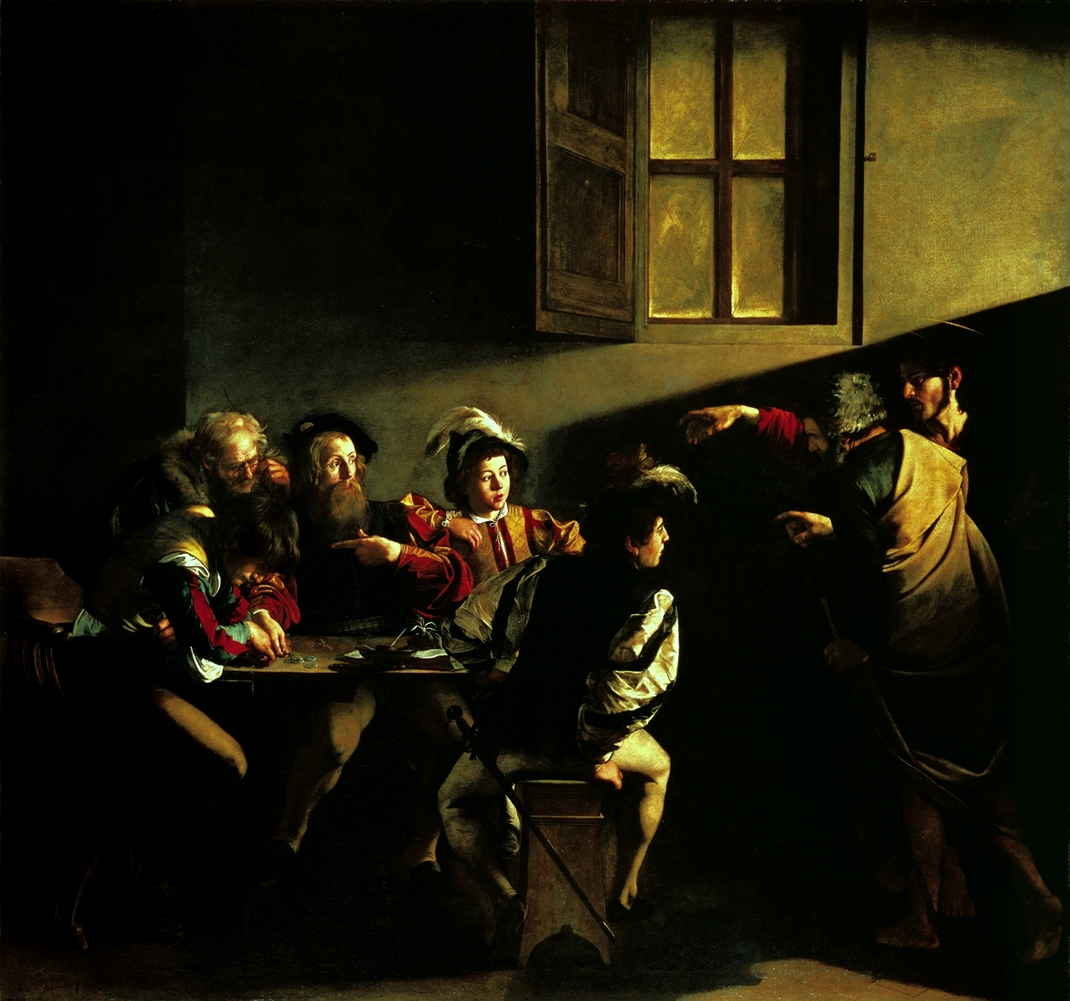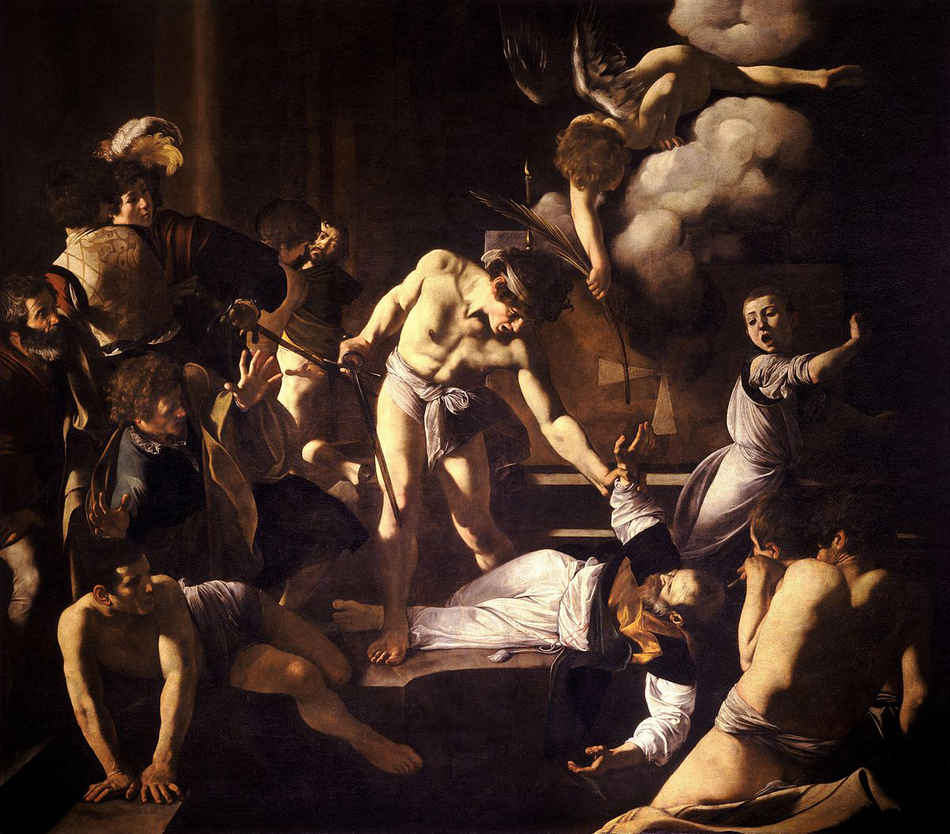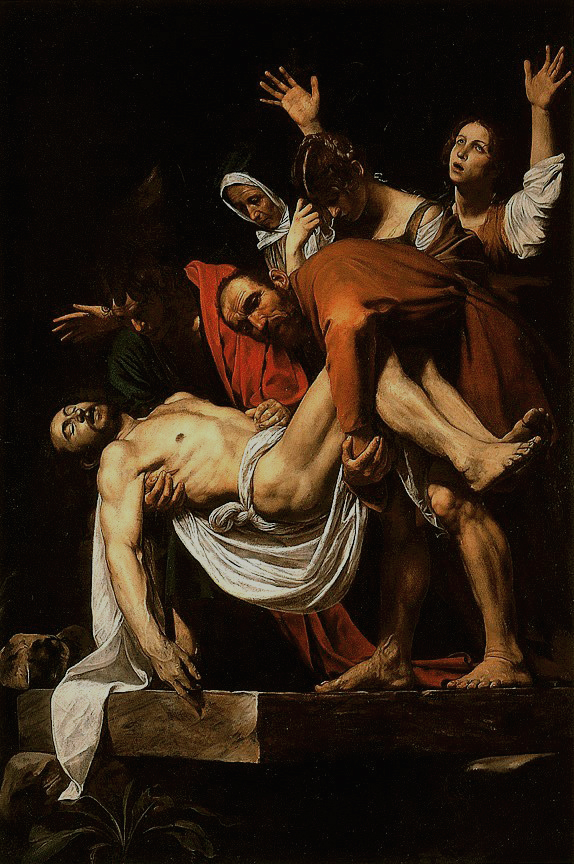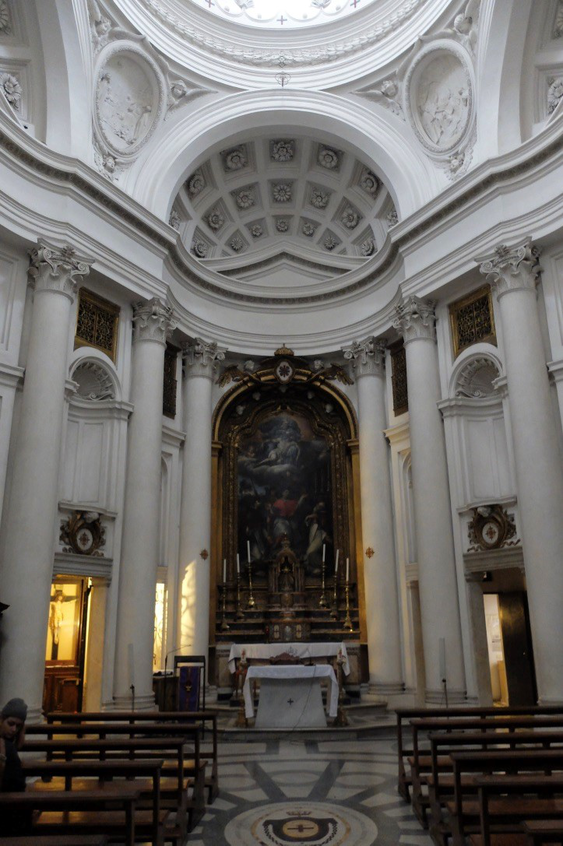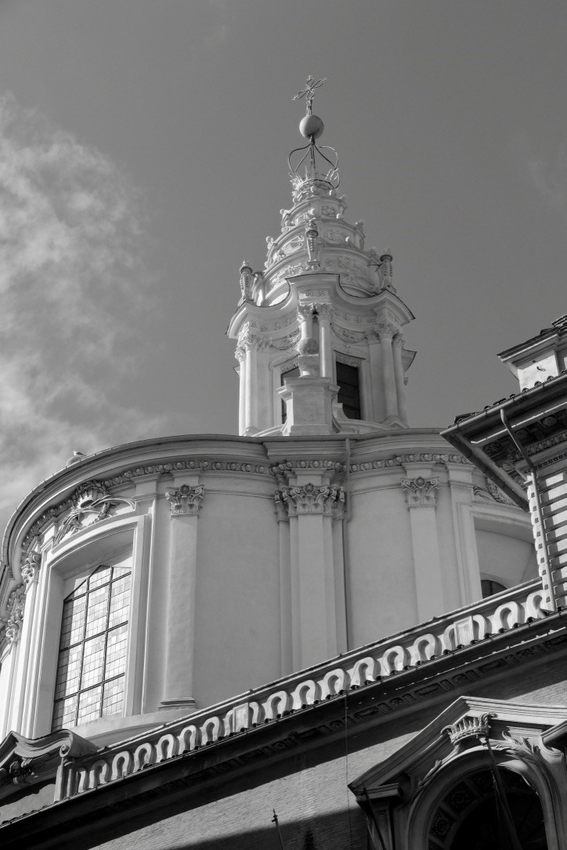Lamento d’Arianna
Comparable in its small scale and the monumental reach of its musical construction, to the huge importance and influence of the small church of San Carlino, praised and admired by contemporaries and followers, is Monteverdi’s lamento d’Arianna, the only scena, together with Rinuccini’s libretto, that survived from the Opera L’Arianna.
First performed in 1608 during the Duke’s son’s wedding festivities in Mantua and later revived in Venice, during the carnival festivities of 1640 under Monteverdi’s direction, its influence helped to establish the lamento as an important music form for the next sixty years, and marked a crucial point in Monteverdi’s progression, testified by his own words.
[…] I found out in practice that when I was about to compose the lament of Arianna, finding no book that could show me the natural way of imitation,[…]what hard work I had to do in order to achieve the little I do in the way of imitation[…]
In the lamento, Monteverdi gives voice to the tragic faith of Arianna, abandoned in the island of Naxos by Theseus, transposing Rinuccini’s text into contrasting sections which illustrates Arianna’s conflicting state of mind.
Accommodating in a flexible way the juxtaposition of emotions from desperation, anger, remorse, fear, love, hope and desolation, according to Gary Tomlinson, "Monteverdi found a poetic idiom whose chief aim was the pure rhetorical formulation of the passion.[…] The ideal poesia per musica”.
Add in Rinuccini´s heightened rhetoric, easily joined to the syntax of Monteverdi’s music and the resulting mixture realized as never before a fundamental goal of humanist musicians: to speak in music.
In this same line, Eric Chafe in his book Monteverdi's Tonal language points out the centring on the word in Monteverdi’s music and the qualities as “breathing” and “speaking”, as being one of the keys to its ”freedom“ of form. In the duality between poetry and music, this apparent freedom results from a deep understanding of the text and its expressive possibilities, by means of a musical language that is flexible enough to accommodate them.
In a similar way, Borromini’s spatial solutions are the result of a combination of a conceptual or symbolic image, free in form, fertile in variation and unconventional, with specific functional and technical demands. Replacing a classical idealized and isomorphic space by another that generates movement, Borromini use of the curve as both structural and dynamic element, can be compared to Monteverdi’s uses of the text as a generator and rationalizing element.
The alternation of opposite curves and surfaces generated in the ground plan of Borromini’s church, result in a perception of the interior of the church at this level as alternating contracting and expansive, dense and thin, slowing down and accelerating, in short, as "a space that breaths”, in the words of Paolo Portoghesi. The same spatial qualities, when transposed into music, that could illustrate Arianna’s conflicting state of mind in the Lamento, in its succession of contrasting sections that seem to obey the same principles of Borromini’s organic space.
Two important views concerning the perception of space and motion in music, are referred to by Edward Lowinsky in The Physical and musical space in the Renaissance.The first, points out the capacity to specify space and motion as a result of the experience of music being a spatial phenomenon and a psychological fact, illustrated by our music notation.
Secondly, the expansion of the tonal space in the Renaissance, which the author relates to the new theories of the expansion of the physical space in the fifteenth and sixteenth-century started by Copernicus, increased the perception of harmonic music as a whole, consisting of different parts.
According to Eric Chafe, the following phase of this development is the moving towards new tonal forms in the seventeenth-century music, which gradually replaces the self-contained harmonic world of the Renaissance, "by strengthening the tonal centres by means of hierarchical harmonic devises", with the increase of the use of transposition as a compositional device to provide tonal expansion.
Starting from these notions and based in my own experience as performer of the Lamento d’Arianna, the transposition of the perception of Borromini’s space created by the alternation of opposite curved surfaces into the analysis of the Lamento, could result in a division in eight different contrasting parts as followed:
From this short analysis, it is possible to observe that the expansive sections are all conclusive with a final cadence in the main tonal centre of the piece, cantus durus d mode, working as an unification devise throughout the whole piece, simultaneously expressing Arianna’s returning feelings of love towards Theseus.
All sections that have a contracting quality, present a musical structure that is increasingly rhythmical, dense and accelerating. Related to anger, revolt or fear, they end in open and unresolved cadences, with frequent use of dissonances between the voice and the bass line, expressing tension and conflict.
As a last observation, it is possible to isolate the opening section in a circle/oval, the geometric equivalent to the octave in the first and final cadence, expressing Arianna’s closing in emotionally in preparation for death. Therefore, in an inverted order of the octave, this cadence could represent Arianna’s pleading to the skies (upper note of the octave d’, corresponding to coelum stellatum, firmament) followed by the silence of death (first note d, corresponding to silentium, silence).
Maddalena Penitente
The illustration of the closed character of the lamento’s first section Lasciatemi morire, with the recurrent use of the octave in the major cadences, can be visually expressed by the painting Maddalena Penitente van Caravaggio from 1594-95. In their common spatial representation it takes only a small effort to imagine Maddalena’s image showing the moments where Arianna’s lamentation begins or ends:
Part 2. Transition zone, Contrast and expansion
The Monteverdi pieces need longer pauses, resting occasionally, allowing retardation and at times even pressing on. There is in them a wonderful power to move the passions exceedingly.
The challenge that Borromini faced with the limited space available for his project, becomes more visible in the second level of San Carlino, which I will refer to as the transition zone.
The complexity of the ground plan materializes in this level with unexpected proportions and a clear sense of variation and contrast. The rhythmic verticality of the monumental Corinthian columns, eight in each side disposed in pairs and the placement of the niches in between at different levels, introduces a theme that becomes one recognizable feature of Borromini's work; the variation of the same motif, giving to architectural forms and decoration a rhetorical and symbolic character.
Another important and original aspect of the church’s interior is the way Borromini resolves the transition between the first level of the columns and the superior arches that support the dome (pendentives). The prominent horizontal cornice does not break this continuity but undulates instead to accommodate the transition. Comparable to a dissonance in music, tension is created by the torsion of the supporting arches, which make the transition from the complex geometry of the ground plan to the pure oval shape of the dome.
La Vocazione di San Matteo
In a parallel development of the gradual increasing of the tonal centres and the exploration of devises to provide musical continuity, from which Monteverdi’s lamento d’Arianna and the Sestina are important expressive examples, a similar development had occurred in the field of visual arts.
As mentioned by James Ackerman in his book Distance Points, perspective, “literally brought all perceived space under rational control", replaced in the seventeenth-century by an increasing baroque concern with complex, dynamic motion and multiple perspectives, dependent on the position of the viewer in relation to the work".
Another important aspect of this development concerning the creation of space and motion, is mentioned by the abstract painter Frank Stella in Working Space. Starting from his conviction that “the aim of the art is to create space”, he points out Caravaggio as a painter of real space, that allows painting to move and breathe, to suggest extension and unrestricted motion, in his ability to create the sensation of real space within and outside of the action of the painting, “probably the best space-composer we will ever see.”
These aspects of the baroque difference to classical systems of the Renaissance, concerning the creation of space, motion and relation to the viewer, can in my view, be found in the paintings of the Contarelli Chapel in the church of San Luigi dei Francesi in Rome. Being Caravaggio’s first important commission in this city, these paintings are a significant turning point in his innovative approach to religious subjects, in importance comparable to San Carlino for Borromini and the lamento d’Arianna for Monteverdi.
On the left side of the chapel, La Vocazione di San Matteo can be seen as an expansion of the theme of conversion and remorse already present in the self-contained figure of Madalenna Penitente. In his Teutsche Academie, first published in 1675, Joachim Van Saudrart, describes Caravaggio’s painting:
Il Martirio di San Matteo
Situated on the opposite wall of the Contarelli chapel, Il Martirio di San Matteo, breaks with the ordered composition of the previous painting, with the focal centre on the laying figure of St Matthew being killed by a warrior, from where the represented action seems to expand in all directions in a centrifugal composition.
Contarelli’s precise indications for this commission, in its reference of “a long and ample place more or less in the form of a temple and, in the upper part an isolated altar raised up above three, four of five steps", is practically erased in darkness in Caravaggio’s final version with only some shadowy columns, a partly visible altar and a few steps suggesting the temple. Bringing the crowd and the action to the foreground Illuminated by a theatrical light that falls fully on the two central figures and erratically on all others, the scene shows a display of human emotions in the faces, poses and gestures, from horror, fear, compassion and consternation.
After the experimentation of the paintings in the Contarelli Chapel and the realization of the dramatic potential of the chiaro-scuro for his large narratives, in the creation of a pictorial reality that is hardly contained in the limits of the frame, Caravaggio introduces a dimension that is both realistic and simultaneously enhances the staged effect of his religious themes.
The need to pictorial reality must pass through the dissolution of perimeter and surface. Through his (Caravaggio) way of space-composing, religious emotion can be directly communicated rather than represented by painting.
This interaction with the viewer is emphasized by means of the realistic representation of the figures, with frequent use of life-size scale and eye contact, in a deliberate effort to unify pictorial and spectatorial space. Similar in its ingenious and methodical construction to the way in which the undulated walls of Borromini’s interior seem to interfere with the observer pulling and pushing him from its position in a dynamic exchange, and Monteverdi’s musical dynamic expansion of Rinnucini’s words in the lamento, leaves nobody indifferent to the tragic fate of Arianna.
Then the comedy in music was presented […] and all the beautifully dressed actors played their parts very well, but best of all the comedienne (who played) Arianna. It was the story of Arianna and Theseus, and in her lament in music accompanied by violins ( viole e violini) she made many weep at her sad state.
Sestina and La depositione di Cristo
If the emotional inner conflict of Arianna is presented by means of contrasting sections, in the Sestina, Lacrime d’amante al sepolcro dell’amata included in Monteverdi’s Sixth Book of Madrigals from 1612, the challenge was to find the same variation and contrast in a theme mainly dominated by lamentation and grief. In this book, the predominance of madrigals of lamentation can be linked to events of Monteverdi’s personal life, like the death of his wife and one of his protégés, the singer Caterina Martinelli.
Commissioned by the duke of Mantua, in memory of Caterina, Scipione Agnelli’s text in the strict and virtuoso form of the poetic sestina, is set to music in 1610, the cycle making extensive use of descending patterns in association with the plangent words of the shepherd Glauco over the tomb of his beloved Corinna.The ascending motions that illustrates the plea to the muses and the recurrent descendent lamentation in contrary motions, are unified by the tonal continuity across the six parts of the cycle, each part starting with the tonal centre of the previous one, much in the same way that Monteverdi did in the Lamento, with final cadences to the original cantus durus d mode after all major section divisions, as an unifying device.
In this continuity between parts and the ascent/descent dualism with the choice of a traditional form, Monteverdi’s Sestina can find its visual counterpart in Caravaggio’s La Deposizione di Cristo from 1602-4. In this way, the renaissance poetic form of the Sestina and the pyramidal conventional representation of the entombment of Christ could be seen as an expressive example of the synthesis they both did between tradition and innovation. If the outer form is conventional, it is in the inside where the innovation happens. Let us look first at Caravaggio’s painting:
The six human figures, are located in the foreground of the painting, closer to the viewer. In the predominance of descending motions, (as in Monteverdi's Sestina) Caravaggio organized his composition suggesting that the body of Christ in the middle is being lowered right into our space, his hand falling down into his grave. Supported by two of his followers (John the Evangelist and Nicodemus) and accompanied by two women with lowered heads (Virgin Mary who is represented as an old woman, contrary to conventions, and Maddalena), in a sharp contrast with the outstretched arms of the woman on the right of the composition, with lifted head and eyes (ascending motion in the Sestina). The diagonal formed by her stretched left hand and the tip of Jesus’s shroud, unites the densely grouped figures as does the profound darkness around them, bringing the figures even closer to each other and into our own space (tonal continuity in Sestina).The vertical axe that starts on the corner of the flat stone, stabilizes the diagonals, directing the eye of the viewer to Nicodemus’s face, the center of the composition, which mournful gaze is directed to the viewer, making us the spectators and witnesses of this dramatic scene.
Comparable to the building up of alternating tension followed by its releasing in Caravaggio's painting and the way Borromini uses the tension between contrary surfaces to expand or contract the space, is the extent use of contrary motions in the Monteverdi's Sestina.
In the last part of the cycle, from the sixth line of the sixth stanza, Ahi Corinna, ahi morte, ahi tomba! (Ah, Corinna, ah, death, ah tomb!) the repeatedly and urgent cry in g to the deceased Corinna from the upper voices (woman’s lifted arms) are against the low trio which have a responsorial function. The texture increases in density and acceleration, culminating in the transposition upward in a. After the call, the voices drop exhausted with fading exclamations in Ahi morte, Ahi tomba, ending in an evaporated cadence in a. As result of this dissolution of the musical material, with only two voices left in dica la terra, alto and tenor, (lowered heads of the Virgin Mary and Maddalena), the musical space rarefies and slows down, in a gradual disappearance of the voices that could express the profound silence and darkness of the tomb.
First section: (desolation, pleading / circle-oval)
Lasciatemi morire… combination of ascending and descending motives in the first verse ending in a cadence in d, repeated at the end of this section, introducing the tonal centre of the whole piece, the cantus durus d mode. The first and last note of this cadence have an interval of an octave, which, prevalent in the Renaissance concept of spatial organization, feels to resemble the geometric figure of a circle/oval.
Second section: (descriptive/ mainly expansive, with occasional contrary movements)
O Teseo, o Teseo mio…The call to Teseo is presented for the first time in d. Being a recurrent motif between each section, it is both an element of continuity and unification. In this section, which corresponds to three periods of Rinuccini’s text, Arianna presents her situation, alternating pleading, fear, hope and Theseus’s triumph away from her, in a modulation to B. The final cadence in O padre mio with an interval of octave in d.
Third section: (anger/ contraction)
Dove, dove è la fede…The anger takes place, moving to the tonal centre in a. The harmonic response follows the rapid succession of words in acceleration, which climax is in “lasciarmi in abbandono”, similar to the first motif of lasciatemi morire in a modulation from d to e, with the final chord in E (divori).
Fourth section: (desolation, pleading/ expansion)
Ah Teseo, Ah Teseo mio lascerai tu morire… In this short section Arianna expresses the incredulity of her abandonment, in an ascending line that expresses her pleading to Theseus followed by a final cadence in d.
Fifth section: (anger, revenge /contraction, dense)
Ahi che non pur rispondi… accelerando in rage and thoughts of revenge, in a sequence of rapid notes ending in a, which can be described as an announcement of Monteverdi’s later stillo concitato.
Sixth section: (repentance, remorse, confusion/expansion, thin)
Che parlo… the reappearance of the motif o Teseo, introduces again the tonal centre d, after the previous section related to Arianna’s call for revenge. Final cadence in d, related to her feelings towards Theseus.
Seventh section: (incredulity /contraction, dense)
Misera… in a sudden shift, Arianna revolts towards her thoughts and her feelings for Theseus, evoking death.
Eight section: (desolation, acceptance/ expansion, slowing down, silence)
O madre, o padre…In the last section, accepting the fate of death, the movement of the voice slows down to became fragmented in shorter phrases and frequent rests, a thin atmosphere in a space that gradually fades away in darkness and silence. Final cadence in d.
With the representation of the figure of Maddalena circumscribed in an oval, the geometric translation of the interval of an octave, Caravaggio isolates from the exterior this moment of sorrow and remorse, expressed by the almost staged abandonment of the body and the neglected objects left outside the inner circle, symbols of the life she leaves behind.
In this way, Monteverdi’s realistic expression of the human emotions (Arianna) and Caravaggio’s naturalistic representation of the human figure (Maddalena), transcend their mythical and biblical origins to be presented in their most human dimension.
Arianna moved us because she was a woman, and similarly Orpheus because he was a man[…]. Arianna led me to a just lament and Orfeo to a righteous prayer.
This continuity of the structural elements, is even more evident in the interior of the Sant’ Ivo alla Sapienza, for the University of Rome (La Sapienza), which construction started in 1642 and was completed 20 years later. At the ground plan level, based on a six pointed star- the symbol of King Solomon and Wisdom,- the six niches that result from the interception of the two triangles, have their continuation upward into the shell of the dome, flowing without interruption from the ground floor to the lantern. This vertical motion, is continued even in the exterior by means of an expressive helicoidal tower, bringing to the exterior the symbolic gesture present in the conception of the whole church.
Looking at the composition of this painting, we can see how Caravaggio reduces the architectural elements to a minimum, in this way focusing all attention on the action that is taking place in the room.
Doing that he establishes three different focal centres: the vertical rectangular form on the right includes the figure of Christ and Peter, with the face of Christ in full light as a natural centre. The crowded horizontal rectangle extending to the left seem to have its focus in the figure of Matthew pointed to itself in bewilderment. The third focal point is the window above that introduces both a strong element of space and verticality, and where the symbolic element of the cross in the window pane seems to dominate. The whole composition is unified by the stretched arm of Christ pointing out in Matthew’s direction and the diagonal line of light that follows this symbolic gesture, coming from an hidden source on the right, which divides the back wall in two distinct parts. Light, charged with symbolic meaning, is used as an unifying element of contrasting compositional elements, comparable to the way Monteverdi uses the recorrent tonal centre of the lamento d'Arianna and Sestina as an unifying devise.
Christ is represented in a dark room, whom he has just entered with two of his followers, and where he finds the tax-collector Matthew in the company of rogues, with whom he is playing cards and dice[…] Matthew, as if afraid, conceals his card in one hand and places the other in his breast; in his face he reveals alarm and shame, which is the direct result of his feeling that he is unworthy to be called the Apostate by Christ. One of the other men, takes his money from the table by sweeping it with one hand into the other, and next attempts to sneak away; all of which seems true to life and nature itself.
1-Lasciatemi morire,
E che volete voi che mi conforte
in cosi dura sorte in cosi gran martire?
Lasciatemi morire.
2-O Teseo, O Teseo mio
Se che mio ti vò dir che mio pur sei benchè tínvoli,
ahi crudo agl’occhi miei.
Volgiti, Teseo mio,volgete Teseo, o Dio,
volgeti indietr’a a rimirar colei
che lasciato ha per te la patria ‘l regno
e’n queste arene ancora
cibo di fere dispietate e crude
Lascerà l’ossa ignude
O Teseo, O Teseo mio
Se tu sapessi, oimè come s’affana
La povera Arianna
Forse, forse pentito
Rivolgeresti ancor la prora al lito.
Ma con l’aure serene
Tu te en vai felice, ed io qui piango;
A te preparara Atene liete pompe superbe
Ed io rimango
Cibo di fere in solitarie arene;
Te l’uno e l’altro tuo vecchio parente
Stringeran lieti ed io più non vedrovi
o madre, o padre mio.
3-Dove, dov’è la fede
Che tanto mi giuravi?
Cosi nell’alta sede
Tu mi rispon degl’avi?
Son queste le corone
Onde m’adorn’il crine
Questi gli scettri sono?
Queste le gemme e gl’ori:
Lasciar m’in abbandono
A fera che mi strazzi e mi divori?
4- Ah Teseo,ah Teseo mio
Lasciarai tu morire in van piangendo
in van gridando aita
La misera Arianna ch’a te fidossi
e ti die’gloria e vita?
5- Ahi che pur non rispondi?
Ahi che più d’Asp’è sordo a’miei lamenti
O nembi, o turbi, o venti
Sommergetelo vou dentr’a quell’onde,
Correte, orche e balene
e delle membra immonde
empiete le voragini profonde…
6- Che parlo, Ahi,che vaneggio misera,
Oimè, che chieggio
O Teseo, O Teseo mio
Non son, non son quell`io
non so quell ío ch’i feri detti sciolse
parlò l’affanno mio parlò`il dolore
parlò la lingua si mà non già’l core.
7- Misera, ancor do’ loco
a la tradita speme, e non si spegne
frà tanto schermo ancor d’armo il foco
spegni tu, morte, omai le fiamme indegne.
8- O madre, o padre,
O dell’antico regno superbi alberghi
ov’hebbi dór la cuna
o servi, o fidi(Ahi fato indegno)mirate,
ove m’ha scorto empia fortuna,
mirate, di che duol m’ha fatto herede
l’amor mio,la mia fede,
e l’altrui inganno: cosi va
Chi troppo’ ama e troppo crede.
